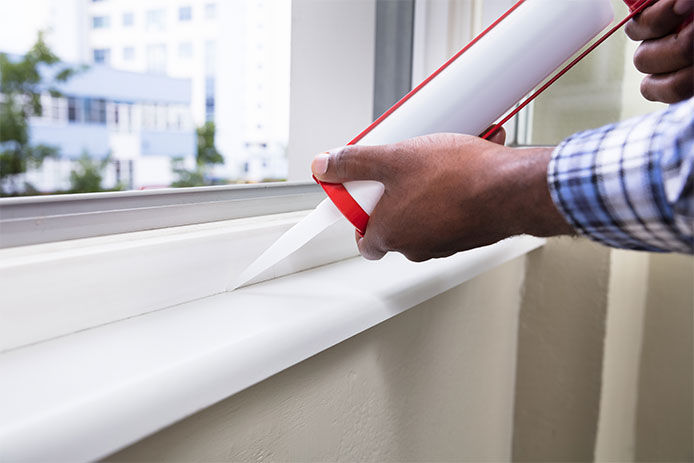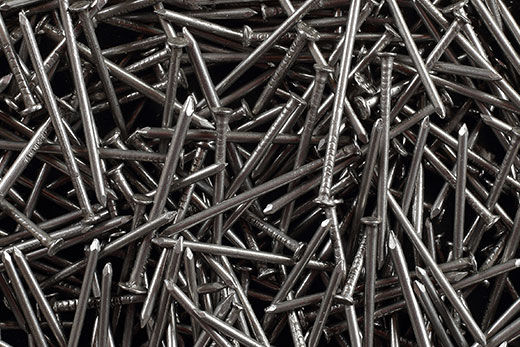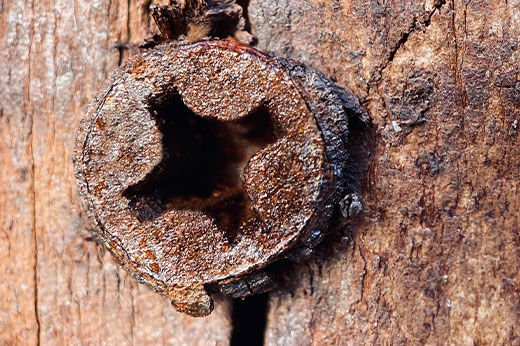If you want to save money on your energy bills and increase the comfort of your home this winter, sealing drafty windows is an easy home project that you can tackle today! We have all the supplies and information you need to fix those drafty windows and stay warm this winter.
4 Easy Ways to Seal Drafty Windows

Drafty windows are every homeowner's nightmare! Windows that let cold air in during winter and cool air out in the summer make your house less comfortable and cost you more on your energy bill.
Sealing drafty windows could save you money on your utilities. Not to mention that taking care of those drafty windows will make your winters much cozier and more comfortable in your home. So put away those sweaters and extra socks! Here's how to stop drafty windows with budget-friendly solutions that won't break the bank.
Why Are My Windows Drafty?

Why do drafty windows happen? You could feel a chill coming from the windows in your home for many reasons. Often, it's related to the age of the windows. Over time, the seal around your windows begins to loosen and deteriorate.
When windows are first installed, the stripping and seal around the glass in the frame are usually solidly in place. But the heat, cold, and moisture of outdoors can cause window frames and seals to expand and contract.
Homes also have natural condensation in the air—humans, pets, and plants release moisture naturally throughout the day. Activities like cooking, showering, and laundry can increase the humidity in your home. The water condensation builds up on windows and eventually causes the seals to wear and deteriorate, allowing air to seep into your home.
If you’re wondering if your windows are getting drafts (or “air infiltration”), you can test them by dampening your hand with water and holding it around the outer perimeter of the window. If you feel cool air, you’re getting some drafts and leakage into your home.
So, what can be done about drafty windows? If you’re not ready to install new windows in your home, how do you fix drafty windows to keep your home’s temperatures consistent and comfortable?
How to Seal Windows

The best way to fix drafty windows is to seal up the cracks. However, some methods for sealing up your windows can make opening them more challenging when you want to let in the fresh air on that first warm spring day. Nevertheless, if cold air is sneaking into your home (and warm air is escaping), you’ll want to take measures to address the issue, especially if winter is on the way.
Here are four cost-effective solutions to protect your home and wallet from drafty windows. Not only will you save money with these simple and affordable fixes, but you'll also feel cozier in your home when the weather is cold. Sealing drafty windows is truly a win-win.
1. Cover Drafty Windows with Window Insulation
Shrink film or "shrink-and-seal" window insulation is a transparent plastic film that's easy to install. Using double-sided tape (typically included in the kit) and a hand-held hair dryer, shrink film is one of the simplest solutions for drafty windows.
To install shrink film, you first measure and cut the plastic to fit your windows. Next, apply double-sided tape to the perimeter of a clean window frame (you may need to wipe the frame with rubbing alcohol to ensure an air-tight seal). Remove the backing from the tape, and carefully apply the plastic sheeting to cover the window completely.
Follow the instructions on the shrink film kit. Once heat is applied to the plastic, using a hand-held hair dryer, the shrink film slightly shrinks and becomes taut across the window. Shrink film offers protection from window drafts, keeping your home sealed up for the winter months.
Shrink film is a quick and simple fix that anyone can do for drafty windows. Best of all, it’s easy to remove when the weather warms up!
2. Stop Window Drafts with a Draft Cloth or Foam Tape

Draft cloths are long fabric insulators that slide beneath a window to prevent hot or cool air from escaping your home. Similarly, foam tape is a fabric-like foam strip that you can apply along the bottom or side of a window to block air infiltration and keep your home at a consistent temperature. Both products are extremely easy to work with.
To use draft cloths, you simply open the window, put the draft cloth down along the base of the window frame, and close the window.
Follow the instructions on the foam tape to ensure the best results. You should always work with a clean window frame, so you may need to clean the frame with rubbing alcohol. Remove the backing from the tape and apply it along the bottom of the open window. Close the window to create a tight seal between the window and frame.
No extra tools or hardware is required to work with a draft cloth or foam tape, making them as easy as it gets for any homeowner. These are very inexpensive solutions for drafty windows.
3. Replace Weatherstripping on your Drafty Windows

Like foam tape (also called weatherstripping tape), weather stripping is another way to fix drafty windows. Weatherstripping is a rubber, silicone, or vinyl material that runs along the perimeter of your windows, often on both sides. Weatherstripping can become worn or damaged over time, leaving room for air to get through or heat to escape your home.
If you notice that the weather stripping around your window appears damaged, or in the case of older windows—is missing, applying it to the inside and outside of your windows can help prevent air leaks. There are several types of weatherstripping, but for windows, you’ll want to select a v-strip/tension seal, felt strips, or tubing.
Follow the instructions on the weather stripping package. You’ll want to work with a clean surface to ensure a tight seal. Measure the window and cut the weatherstripping to fit. Remove the backing and press the stripping firmly into place. You’ll enjoy fewer air leaks and a warmer home this winter!
4. Seal Drafty Windows with Caulk

Caulking is another excellent option for sealing drafty windows. If this is your first time caulking, it's easy to start. Follow these five tips to caulk like a pro!
The nice thing about caulk is that it's inexpensive and an attractive way to fix drafty windows. It often makes the windows look nicely "finished," and it's a great beginner DIY home project. Keep in mind that if you caulk the windows along the space between the frame and windowsill, you will need to break the seal to open the windows. So be sure to only caulk around the area where the glass meets the frame or use it to seal windows that you don't want to open later.
To start caulking windows, check them for cracks or peeling paint. Over time, the seal around windows breaks down and will need to be replaced by caulking. Remove any debris and old caulk before you caulk along the windowsills. It's easiest to use a razor blade to clean up the frame and remove peeling caulk, then wipe and clean the area thoroughly.
You can often choose between clear sealant and white, allowing you to customize the look of your windows. When the window frame is clean and dry, you will use the caulk gun or tube to squeeze the sealant around the perimeter of the window. Once it's set, you'll have a beautiful, professional-looking window free of drafts!
While do-it-yourself projects can be fun and fulfilling, there is always a potential for personal injury or property damage. We strongly suggest that any project beyond your abilities be left to licensed professionals such as electricians, plumbers, and carpenters. Any action you take upon the information on this website is strictly at your own risk, and we assume no responsibility or liability for the contents of this article.





